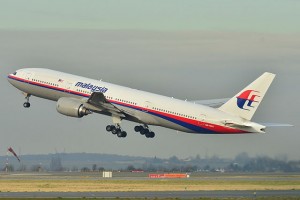
KUALA LUMPUR, Malaysia – Checks into the background of the Chinese citizens on board the missing Malaysia Airlines jetliner have uncovered no links to terrorism, the Chinese ambassador in Kuala Lumpur said Tuesday.
The remarks will dampen speculation that Uighur Muslim separatists in far-western Xinjiang province might have been involved with the disappearance of the Boeing 777 and its 239 passengers and crew early on March 8.
The plane was carrying 154 Chinese passengers when Malaysian officials say someone on board deliberately diverted it from its route to Beijing less than an hour into the flight. A massive search operation in the Indian Ocean and beyond has yet to find any trace of the plane.
Chinese Ambassador to Malaysia Huang Huikang said background checks on Chinese nationals didn’t uncover any evidence suggesting they were involved in hijacking or an act of terrorism against the plane, according to the state Xinhua News Agency.
Uighur groups have been involved in attacks inside China, and some have a presence in the Afghan-Pakistan border area, where al-Qaida and other transnational jihadi groups are based.
Malaysian police are investigating the pilots and ground engineers of the plane, and have asked intelligence agencies from countries with passengers on board to carry out background checks on those people.
Malaysian authorities say that someone on board the flight switched off two vital pieces of communication equipment, allowing the plane to fly almost undetected. Satellite data show it might have ended up somewhere in a giant arc stretching from Central Asia to the southern reaches of the Indian Ocean.
Huang said China had begun searching for the plane on its territory, but gave no details. When asked at a Foreign Ministry briefing Tuesday in Beijing what this search involved, ministry spokesman Hong Lei said only that satellites and radar were being used.
A Chinese civilian aviation official previously said there was no sign of the plane entering the country’s airspace on commercial radar. The government has not said whether this has been confirmed by military radar data.
Malaysian police say they are investigating the possibility of hijacking, sabotage, terrorism or issues related to the mental health of the pilots or anyone else on board, but have yet to give any update on what they have uncovered.
Malaysian military radar spotted the plane in the northern reaches of the Strait of Malacca at 2:14 a.m. on March 8, just over 1 1/2 hours after it took off from Kuala Lumpur. That is the plane’s last confirmed position. A signal to a satellite from the plane at 8:11 a.m. suggests that, by then, it was somewhere in a broad arc spanning from Kazakhstan to the Indian Ocean west of Australia.
Investigators are scouring what little data they have to try to determine who was in control of the plane when it stopped communicating. They have indicated that whoever was in control must have had aviation experience and knowledge of commercial flight paths.
On Monday, Malaysian Airlines CEO Ahmad Jauhari Yahya said an initial investigation indicated that the last words ground controllers heard from the plane – “All right, good night” – were spoken by the co-pilot, Fariq Abdul Hamid.
On Sunday, defence minister Hishammuddin Hussein said those words were spoken after the jetliner’s data communications system – the Aircraft Communications Addressing and Reporting System – had been switched off, suggesting the voice from the cockpit was knowingly deceiving ground controllers.
But Ahmad made a potentially significant change to that timeline.
Speaking alongside Hishammuddin, he said that while the final data transmission from ACARS, which gives plane performance and maintenance information, came before the co-pilot’s words, it was still unclear at what point the system was switched off.
The search for the plane is one of the largest in aviation history, and now involves 26 countries.
It was initially focused on seas on either side of Peninsular Malaysia, in the South China Sea and the Strait of Malacca. It has since expanded to include the Indian Ocean and the Bay of Bengal and 11 countries to the northwest that the plane in theory could have crossed, including China and India.
American, Australian and Indonesian planes and ships are searching waters to the south of Indonesia’s Sumatra Island all the way down to the southern reaches of the Indian Ocean.
China was also sending ships to the Indian Ocean, where they will search two blocks of sea covering a total of 300,000 square kilometres (186,000 square miles), or three times the area they had searched in the South China Sea.
The area being covered by the Australians is even bigger – 600,000 square kilometres (232,000 square miles) – and will take weeks to search thoroughly, said John Young, manager of Australian Maritime Safety Authority’s emergency response division.
“This search will be difficult. The sheer size of the search area poses a huge challenge,” Young said. “A needle in a haystack remains a good analogy.”
___
Associated Press writers Ian Mader, Jim Gomez and Eileen Ng in Kuala Lumpur, and Kristen Gelineau in Sydney, Australia, contributed to this report.